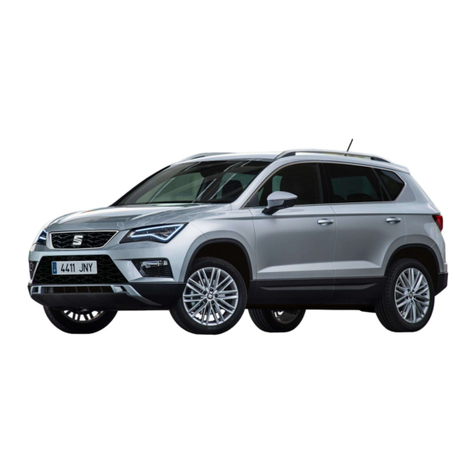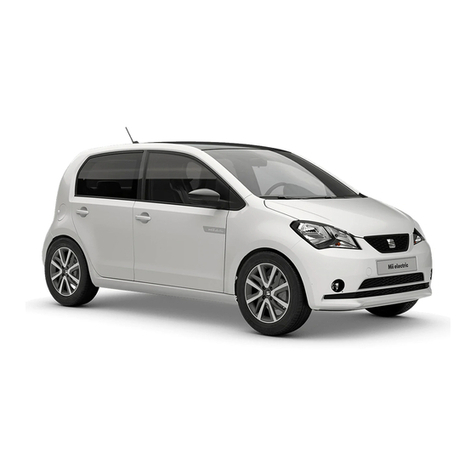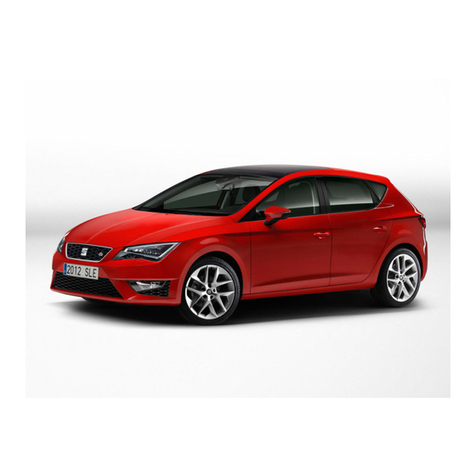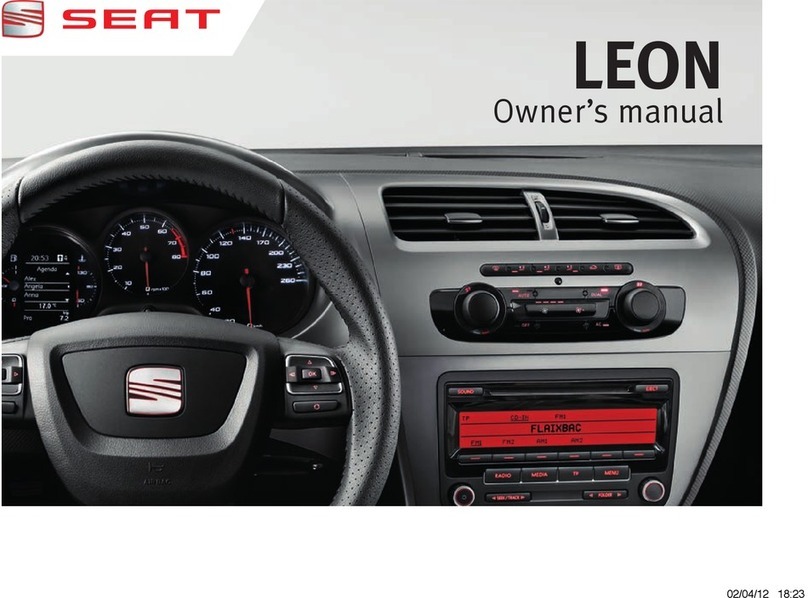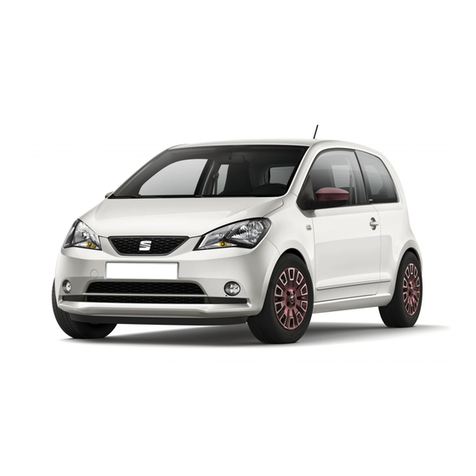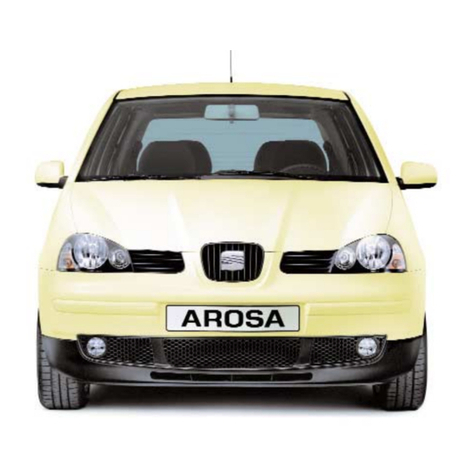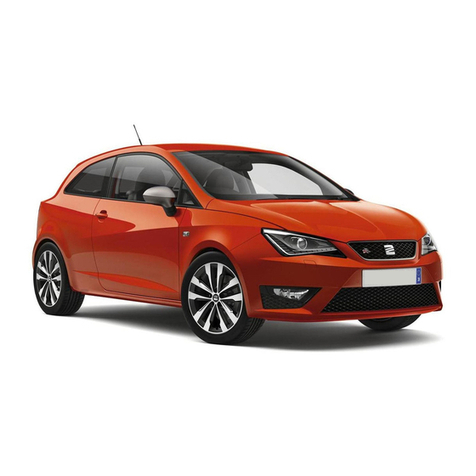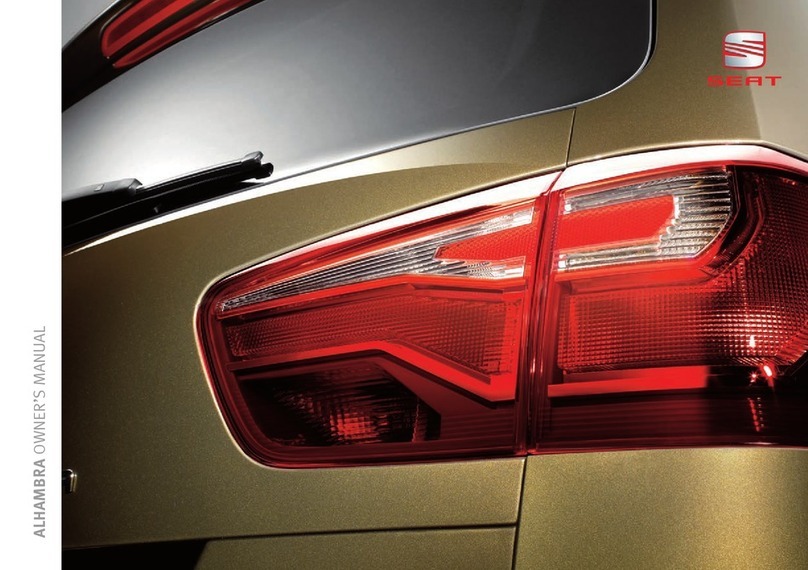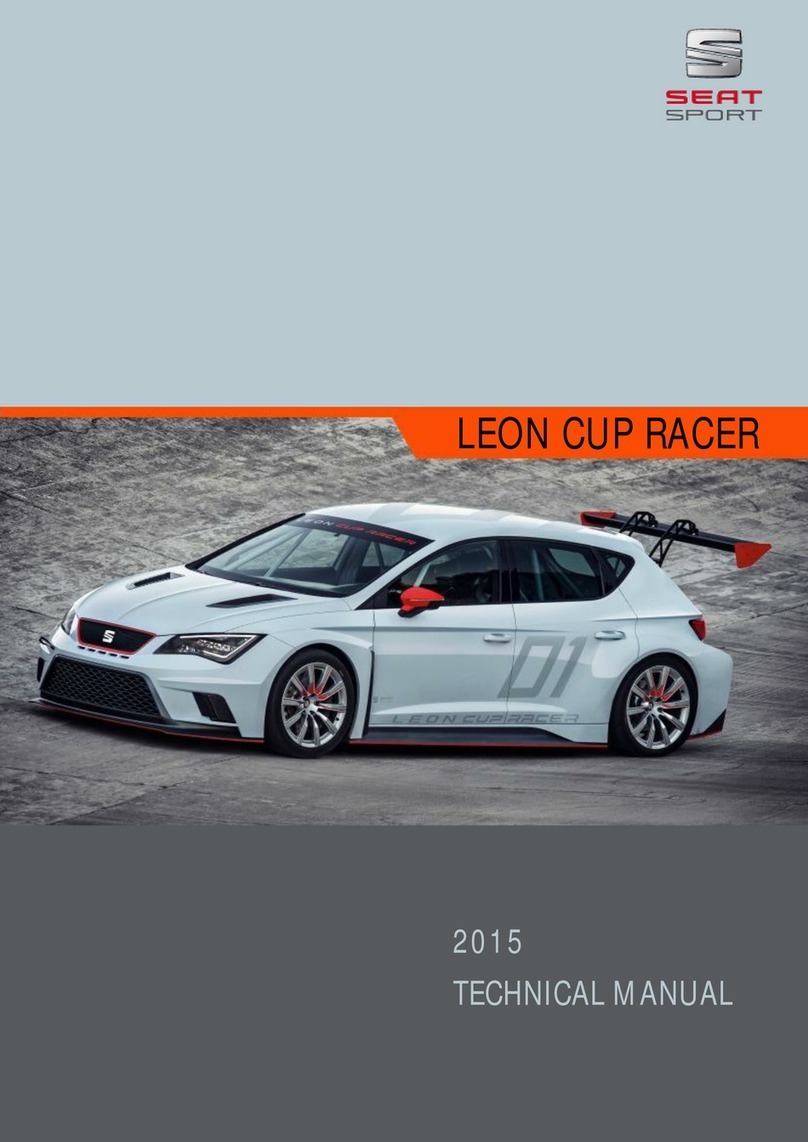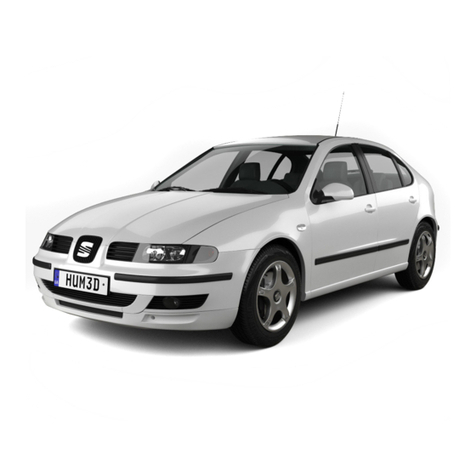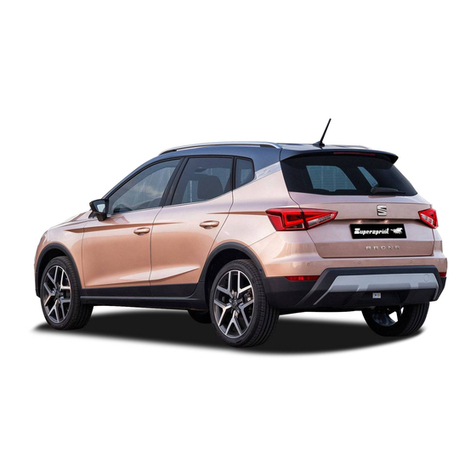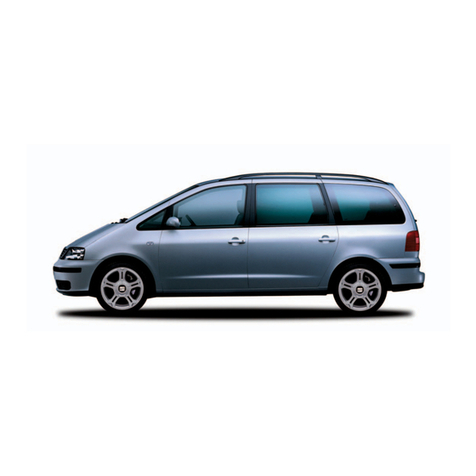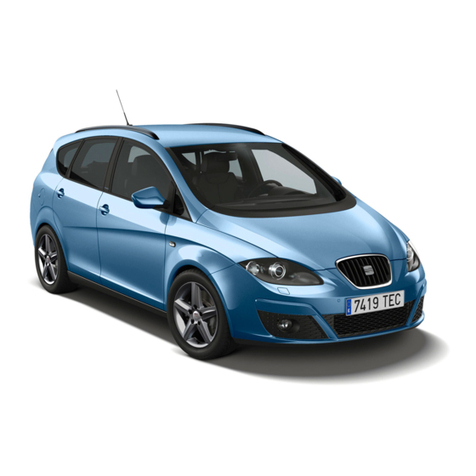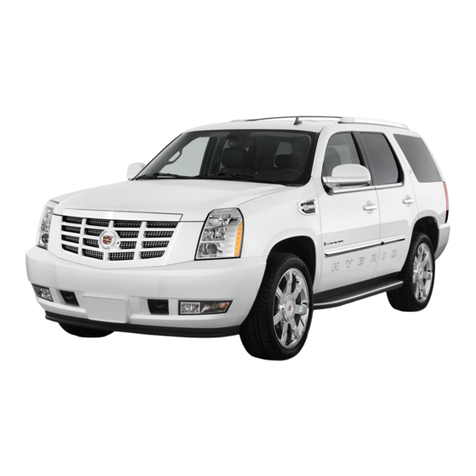
Contents 3
Contents
Manual structure . . . . . . . . . . . . . . . . . . . .
Content . . . . . . . . . . . . . . . . . . . . . . . . . . . . . . . .
Safety First . . . . . . . . . . . . . . . . . . . . . . . . . . .
Safe driving . . . . . . . . . . . . . . . . . . . . . . . . . . . . . .
Dear SEAT Driver . . . . . . . . . . . . . . . . . . . . . . . . .
Tips for driving . . . . . . . . . . . . . . . . . . . . . . . . . . .
Adjusting the seat position . . . . . . . . . . . . . . . . .
Transporting objects . . . . . . . . . . . . . . . . . . . . . .
Seat belts . . . . . . . . . . . . . . . . . . . . . . . . . . . . . . . .
Brief introduction . . . . . . . . . . . . . . . . . . . . . . . .
Why wear seat belts? . . . . . . . . . . . . . . . . . . . . . .
Seat belts . . . . . . . . . . . . . . . . . . . . . . . . . . . . . . .
Seat belt tensioners . . . . . . . . . . . . . . . . . . . . . .
Airbag system . . . . . . . . . . . . . . . . . . . . . . . . . . . .
Brief introduction . . . . . . . . . . . . . . . . . . . . . . . .
Airbag system . . . . . . . . . . . . . . . . . . . . . . . . . . .
Child safety . . . . . . . . . . . . . . . . . . . . . . . . . . . . . .
Child seats (accessories) . . . . . . . . . . . . . . . . . .
Integrated child seat . . . . . . . . . . . . . . . . . . . . . .
Operating instructions . . . . . . . . . . . .
Cockpit . . . . . . . . . . . . . . . . . . . . . . . . . . . . . . . . . . .
Overview . . . . . . . . . . . . . . . . . . . . . . . . . . . . . . .
Instrument panel . . . . . . . . . . . . . . . . . . . . . . . . .
Instruments . . . . . . . . . . . . . . . . . . . . . . . . . . . . .
SEAT information system . . . . . . . . . . . . . . . . . . .
Unlocking and locking . . . . . . . . . . . . . . . . . . . .
Vehicle key set . . . . . . . . . . . . . . . . . . . . . . . . . . .
Central locking and locking system . . . . . . . . . .
Doors . . . . . . . . . . . . . . . . . . . . . . . . . . . . . . . . . .
Sliding doors . . . . . . . . . . . . . . . . . . . . . . . . . . . .
Tailgate . . . . . . . . . . . . . . . . . . . . . . . . . . . . . . . . .
Electric windows . . . . . . . . . . . . . . . . . . . . . . . . .
Panorama sliding sunroof* . . . . . . . . . . . . . . . . .
Lights and visibility . . . . . . . . . . . . . . . . . . . . . . .
Lights . . . . . . . . . . . . . . . . . . . . . . . . . . . . . . . . . .
Sun blind . . . . . . . . . . . . . . . . . . . . . . . . . . . . . . .
Windscreen wiper and washer . . . . . . . . . . . . . .
Rear vision mirror . . . . . . . . . . . . . . . . . . . . . . . .
Seats and storage compartments . . . . . . . . . .
Seat adjustment . . . . . . . . . . . . . . . . . . . . . . . . .
Seat functions . . . . . . . . . . . . . . . . . . . . . . . . . . .
Head restraints . . . . . . . . . . . . . . . . . . . . . . . . . .
Centre armrest . . . . . . . . . . . . . . . . . . . . . . . . . . .
Loading luggage compartment . . . . . . . . . . . . .
Roof carrier system* . . . . . . . . . . . . . . . . . . . . . .
Storage compartments . . . . . . . . . . . . . . . . . . . .
Cup holders . . . . . . . . . . . . . . . . . . . . . . . . . . . . .
Ashtray and cigarette lighter* . . . . . . . . . . . . . .
Sockets . . . . . . . . . . . . . . . . . . . . . . . . . . . . . . . . .
Heating, Ventilation and Air conditioning . .
Climate Control . . . . . . . . . . . . . . . . . . . . . . . . . .
Auxiliary heater* (additional heater) . . . . . . . . .
Driving . . . . . . . . . . . . . . . . . . . . . . . . . . . . . . . . . . .
Steering . . . . . . . . . . . . . . . . . . . . . . . . . . . . . . . .
Stopping and starting the engine . . . . . . . . . . .
Changing gear . . . . . . . . . . . . . . . . . . . . . . . . . . .
Braking, stopping and parking . . . . . . . . . . . . . .
Start assist systems . . . . . . . . . . . . . . . . . . . . . .
Parking sensor system* . . . . . . . . . . . . . . . . . . .
Park Assist system* . . . . . . . . . . . . . . . . . . . . . . .
Rear Assist system* . . . . . . . . . . . . . . . . . . . . . . .
Cruise control system* . . . . . . . . . . . . . . . . . . . .
Tyre monitoring systems . . . . . . . . . . . . . . . . . . .
Practical tips . . . . . . . . . . . . . . . . . . . . . . . . .
Driving and the environment . . . . . . . . . . . . . .
Running-in . . . . . . . . . . . . . . . . . . . . . . . . . . . . . .
Ecological driving . . . . . . . . . . . . . . . . . . . . . . . .
Engine management and exhaust gas purification
system . . . . . . . . . . . . . . . . . . . . . . . . . . . . . . . . .
Trailer towing . . . . . . . . . . . . . . . . . . . . . . . . . . . . .
Introduction . . . . . . . . . . . . . . . . . . . . . . . . . . . . .
Driving with a trailer . . . . . . . . . . . . . . . . . . . . . .
Vehicle maintenance and cleaning . . . . . . . .
Caring for and cleaning the vehicle exterior . . .
Caring for and cleaning the vehicle interior . . . .
Notes for the user . . . . . . . . . . . . . . . . . . . . . . . .
Accessories, parts replacement and
modifications . . . . . . . . . . . . . . . . . . . . . . . . . . . .
Accessories, replacement of parts and
modifications . . . . . . . . . . . . . . . . . . . . . . . . . . . .
Checking and refilling levels . . . . . . . . . . . . . .
Filling the tank . . . . . . . . . . . . . . . . . . . . . . . . . . .
Fuel . . . . . . . . . . . . . . . . . . . . . . . . . . . . . . . . . . . .
Selective Catalytic Reduction* (AdBlue) . . . . . .
Working in the engine compartment . . . . . . . . .
Engine oil . . . . . . . . . . . . . . . . . . . . . . . . . . . . . . .
Engine coolant . . . . . . . . . . . . . . . . . . . . . . . . . . .
Vehicle battery . . . . . . . . . . . . . . . . . . . . . . . . . . .
5
6
7
7
7
7
10
13
16
16
18
21
26
28
28
31
40
40
48
55
55
55
56
59
65
74
74
78
84
85
88
93
96
99
99
107
109
114
118
118
121
127
129
130
142
145
152
154
155
159
159
167
172
172
175
179
188
199
203
207
212
217
220
225
225
225
225
228
231
231
233
242
242
250
255
257
257
265
265
268
272
276
280
284
289
